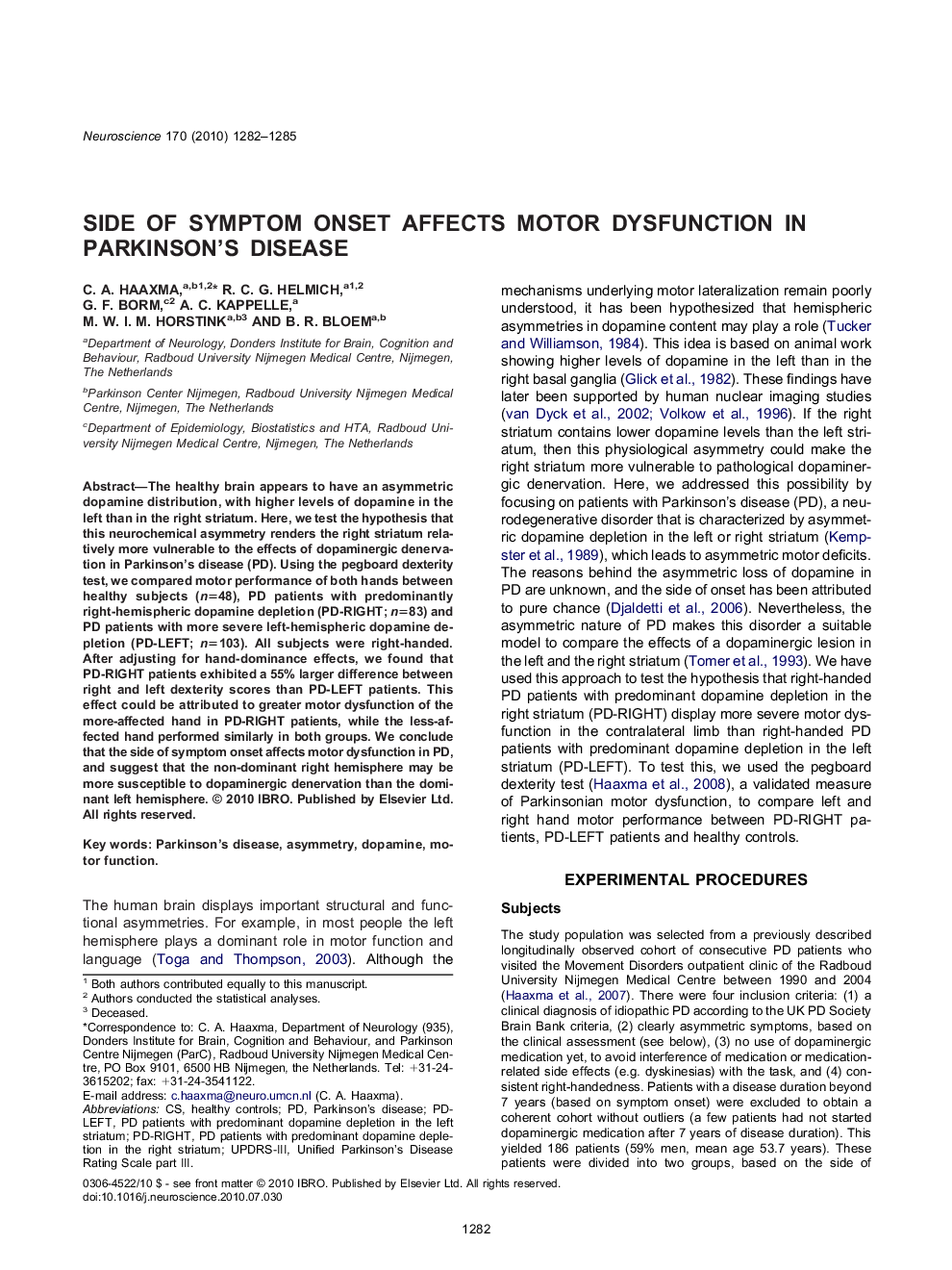| Article ID | Journal | Published Year | Pages | File Type |
|---|---|---|---|---|
| 4339163 | Neuroscience | 2010 | 4 Pages |
The healthy brain appears to have an asymmetric dopamine distribution, with higher levels of dopamine in the left than in the right striatum. Here, we test the hypothesis that this neurochemical asymmetry renders the right striatum relatively more vulnerable to the effects of dopaminergic denervation in Parkinson's disease (PD). Using the pegboard dexterity test, we compared motor performance of both hands between healthy subjects (n=48), PD patients with predominantly right-hemispheric dopamine depletion (PD-RIGHT; n=83) and PD patients with more severe left-hemispheric dopamine depletion (PD-LEFT; n=103). All subjects were right-handed. After adjusting for hand-dominance effects, we found that PD-RIGHT patients exhibited a 55% larger difference between right and left dexterity scores than PD-LEFT patients. This effect could be attributed to greater motor dysfunction of the more-affected hand in PD-RIGHT patients, while the less-affected hand performed similarly in both groups. We conclude that the side of symptom onset affects motor dysfunction in PD, and suggest that the non-dominant right hemisphere may be more susceptible to dopaminergic denervation than the dominant left hemisphere.
